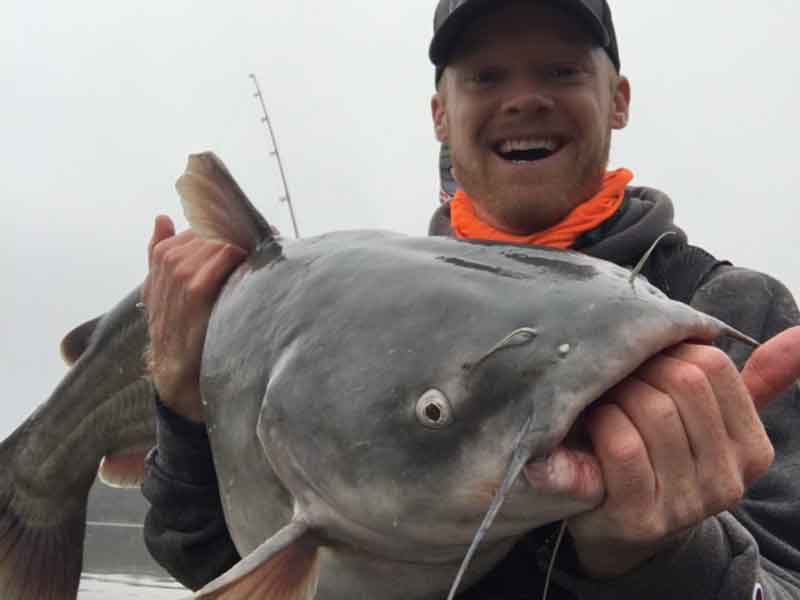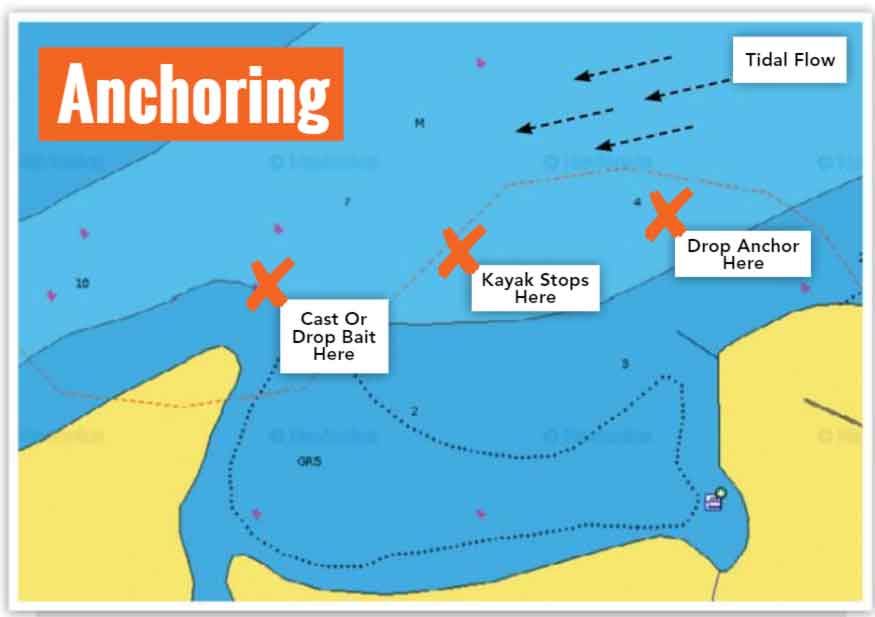With such a wide variety of fish to target in our area, it’s easy to overlook one of the most reliable sources for a fun fight that we have access to in the Delmarva region: catfish. Whether you’re targeting the common channel catfish or chasing a trophy blue catfish, these frisky kitties can keep your rod bent for hours and your freezer filled throughout the cold winter months. I’ve been targeting blue catfish from my kayak for a few years now, and have become quite fond of these fish. One of the most intriguing aspects of catfishing is that you could hook into a five pounder or a 50 pounder while never changing location or paddling more than a few dozen feet from shore. Here’s my method for kayak catfishing, which any kayak angler can use to land these local favorites.

Kayak Catfish Gear
Regardless of target species, the debate over which gear works best can rage on endlessly. Catfishing is no different. I once had a guy tell me I needed shark gear in order to land these fish, and while he wasn’t entirely wrong, he certainly wasn’t all the way right either. Your catfishing gear should be chosen based on a two simple factors: depth and current. I catfish in depths up to 20 feet with moderately strong current. My setup is a seven-foot, medium-heavy, fast-action rod with 20 pound braid, a 40 pound mono leader, and a 7/0 circle hook. I use two to three ounce weights depending on how hard the current is running. Depending on where you fish, you can adjust the line strength, weight, and rod size. Again, this is not the only gear you can succeed with, it’s just what works for me.
I use two rigs for catfishing, the Santee Cooper Rig, and a standard top-and-bottom, rig. Both work well, but there are numerous other rigs which you can succeed with. Try a few, and see which you prefer.
The Best Catfish Baits
Chicken gizzards, dough bait, cut fish, and chicken breast are all common favorites. My go-to is regular chicken breast cut into baseball-sized chunks and soaked in garlic salt for the night. Some say you can use Kool-Aid, and I’ve even read that soaking chicken in WD-40 will get the cats to bite. Sharpies in search of trophy-sized fish often use live sunfish or bluegills, and in Virginia tidal waters fresh cut mud shad is considered a top bait. Clearly, they are not selective fish – use what’s available and what you like best.
Finding a Hotspot
Channel catfish can be found in almost all major bodies of freshwater and relatively fresh tidal rivers and creeks off the Bay. A simple Google search will tell you whether your local water holds them. I prefer to target blue catfish due to their size potential. The Potomac River and any of the tributaries connected to it are top areas to try. Look for holes, channel edges, and choke points, especially those with lots of snags and structure.
Anchoring a Kayak
Like most kayak-based fishing specializations, anchoring down for catfish takes practice. I learned to anchor for blue cats in a low-cost Pelican sit-in kayak and had plenty of success, so don’t think that you need a fancy kayak in order to have a fun day fighting catfish.
You can buy anchor trollies and foldable kayak anchors at most major outdoors stores, and installing them is pretty simple. A regular anchor and rope setup can work well too, but the advantage of anchor trollies is that you can adjust the point on your kayak at which the anchor enters the water, thus turning your kayak to face the proper direction.
Before anchoring, use your fishfinder or a navigational website (Navionics has a web app which works great) to find a deep hole or trough. You can look for regular deep-water areas as well, but I prefer to find troughs and holes. Then, position your kayak up-current from the hole. You’ll want your bait’s scent to be carried by the current down towards the catfish, so staying above current of the target zone is crucial.
One common mistake is thinking that you can simply drop the anchor straight down and the kayak will stay put. If you’re in a lake it certainly will, but if you’re fishing anywhere tidal or where there’s significant current, you’ll need to drop the anchor about 20 to 50 feet above the point at which you’d like your kayak to sit. Drop anchor, let some line out, and then tie off the line. I use a simple screw-in cleat to lock the rope off, and an old Gatorade bottle works great as an anchor-line spool.

If you find your kayak still moving in the current, you likely didn’t let out enough scope on the anchor line. Reposition, and try letting out more line before locking the rope off. Also, if you’re using a fishfinder, don’t be discouraged if there isn’t much on the screen right below you. Catfish feed by feel and smell and once your bait soaks for a few minutes, they’ll go looking for it.
Fighting Catfish From a Kayak
You do not set the hook when using a circle hook – let the circle hook do the work. Keep your drag tight and hold the rod firmly or set it in a rod holder. When you get the initial hit your rod tip will bounce, but don’t do anything yet. A good rule is to not start reeling or fighting the fish until your rod goes down and stays down. If you set the hook or try to fight the catfish before the circle hook has a chance to embed itself, you’re going to become endlessly frustrated and lose a lot of bait.
Now get yourself some smelly bait, tie on a rig, and go anchor down for some catfish. Don’t let their looks fool you, they hit like a freight train and can take some drag, too – good luck and tight lines!
- By Matthew Stone